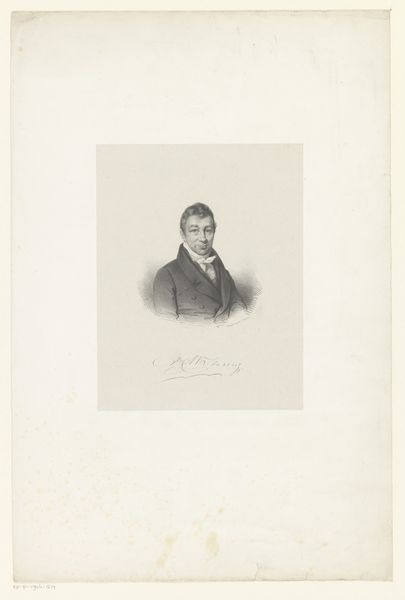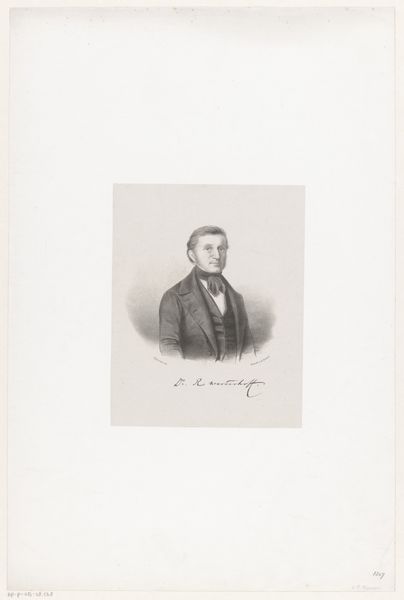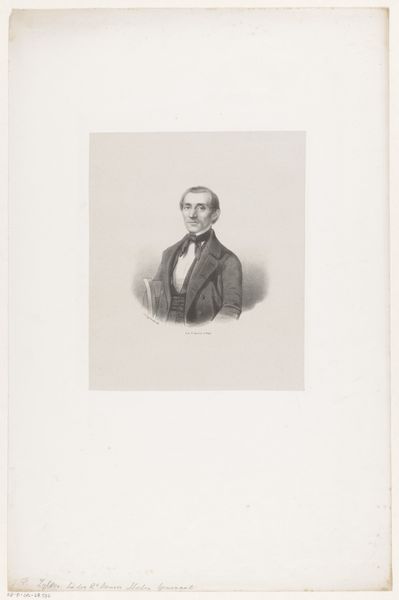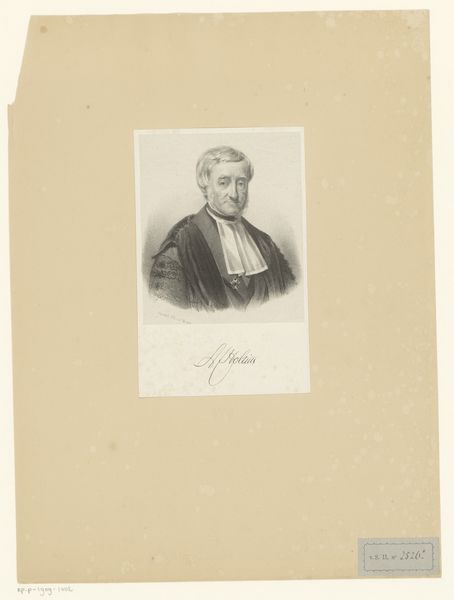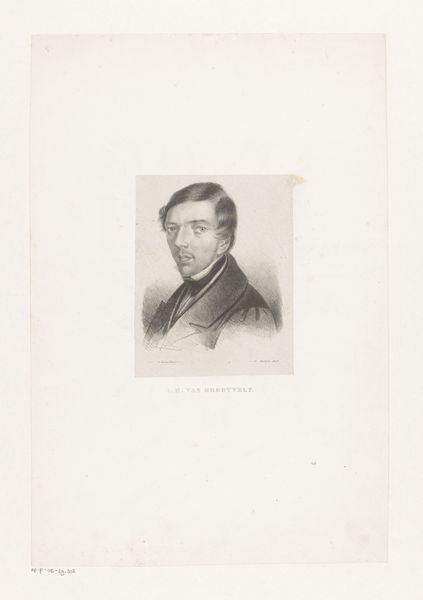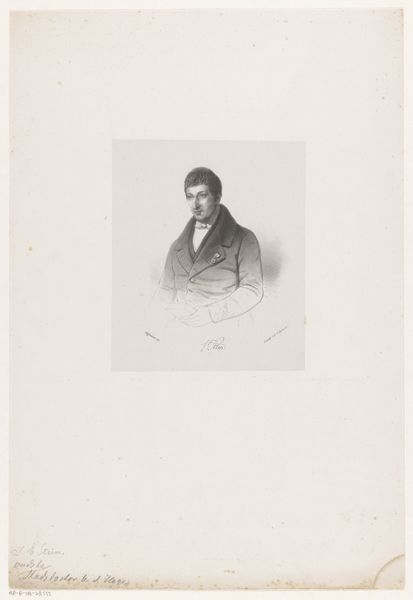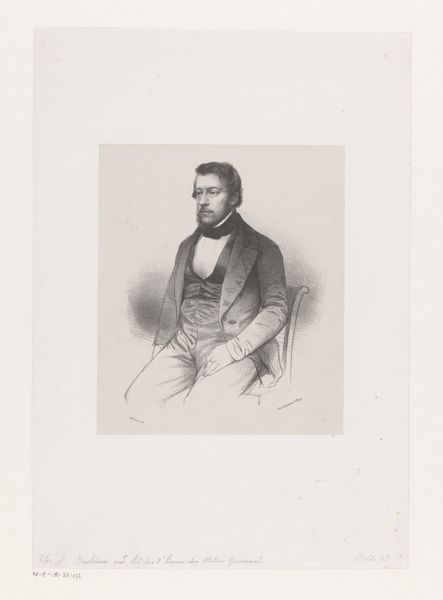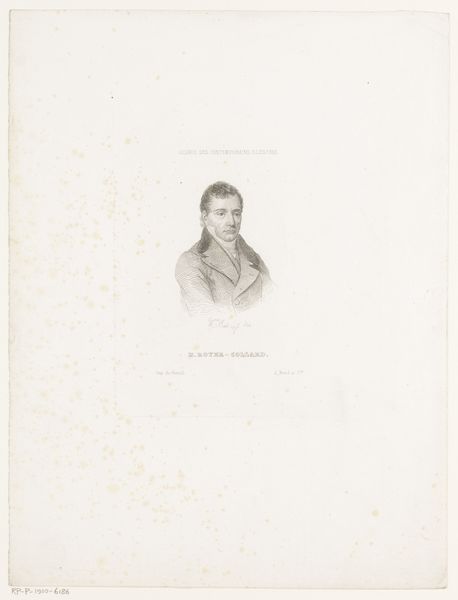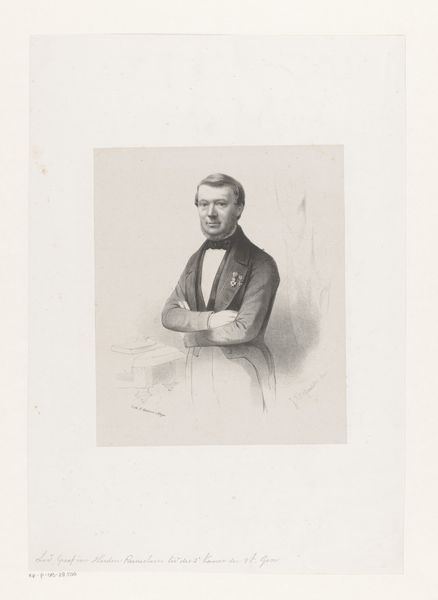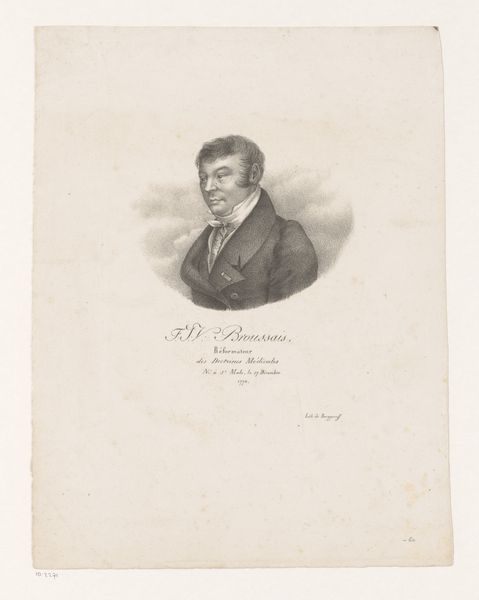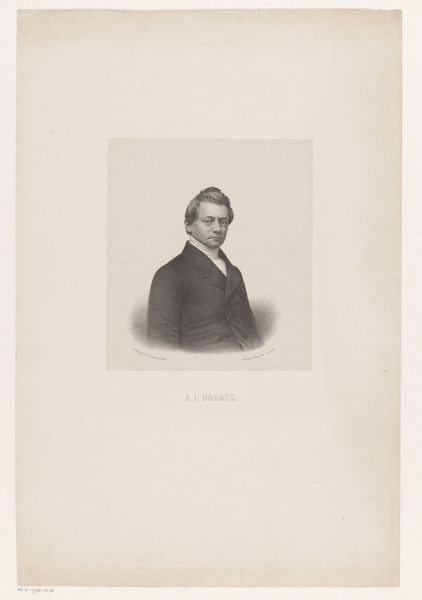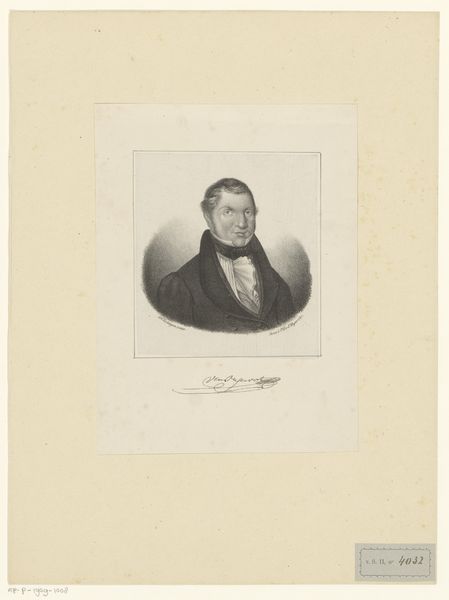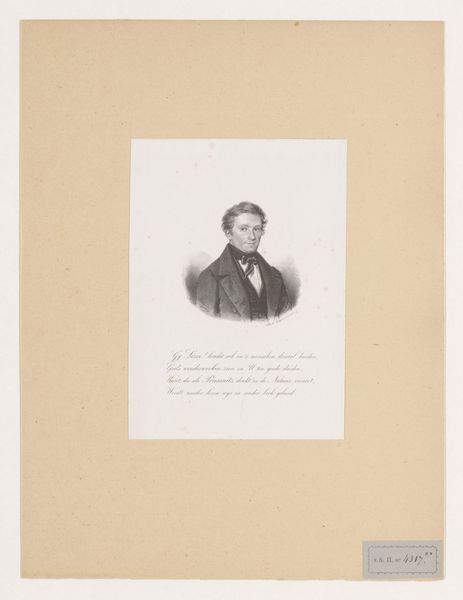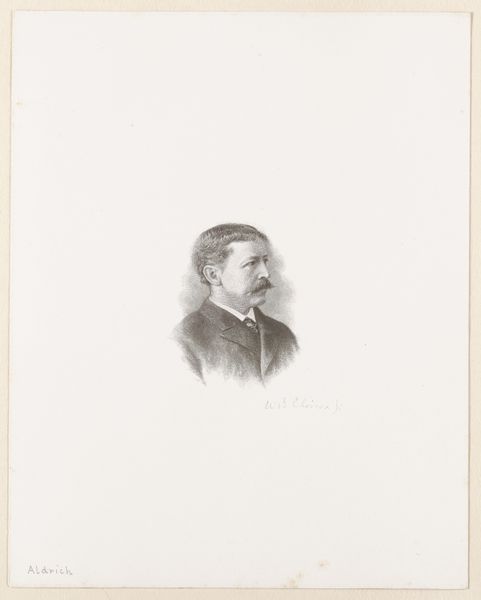
Portret van Antoni Christiaan Wynand Staring van den Wildenborch 1822 - 1845
0:00
0:00
anonymous
Rijksmuseum
print, engraving
#
portrait
#
neoclacissism
# print
#
old engraving style
#
history-painting
#
engraving
Dimensions: height 315 mm, width 258 mm, height 275 mm, width 201 mm
Copyright: Rijks Museum: Open Domain
Curator: Looking at this engraving, there’s something both calming and serious about it. The shades create a sense of depth that I find captivating. Editor: Well, I agree with "serious." The formality practically screams from the image! This is a portrait of Antoni Christiaan Wynand Staring van den Wildenborch; it’s hard to pinpoint exactly when it was created but the dates are floating somewhere between 1822 and 1845. It’s currently held here at the Rijksmuseum. Curator: It has a kind of old-world charm. There’s something about the starkness of the black and white that makes it seem timeless. Editor: Absolutely, and given the subject was a renowned Dutch poet and writer of his time, the formality makes sense. I see the echoes of Neoclassicism trying to instill order after, you know, *waves hands generally* all the turmoil. But portraiture back then was also deeply entwined with projecting particular socio-political messages and constructing masculine identity. Curator: So, he's intentionally presenting a particular image of himself? A pillar of society? A contemplative man of letters? Editor: Precisely! The choice to create this as a print—an engraving, in particular—speaks volumes. Prints were reproducible, democratic, circulating ideas...and ideals, across society. Curator: Interesting. I wouldn't necessarily think of portraiture as democratic! Editor: Not in the access to commissioning the work, of course, but certainly in its reach. How widely would Staring's image circulate beyond an oil painting hanging in his estate? Plus, notice the precision of the engraving itself: how each tiny line carefully models form, adding to the sense of austere respectability and contributing to a construction of bourgeois identity. Curator: That precision you point out has this dream-like, almost fading effect—and this tension between crispness and fading keeps it captivating for me! Like the man's life is flashing before your eyes in shades. Editor: The romantic era was just rising back then. That explains the focus on feelings with which I can empathize here in our time. Perhaps then Staring and this print reflect his desire for that perfect, stable legacy against those uncertain years and his anxieties. Curator: This has me looking at him in a different light now. There's so much going on beneath the surface! Editor: Indeed! I wonder, with his poems considered old fashioned in our time, if his anxiety was well placed or if we also miss a crucial social commentary!
Comments
No comments
Be the first to comment and join the conversation on the ultimate creative platform.
